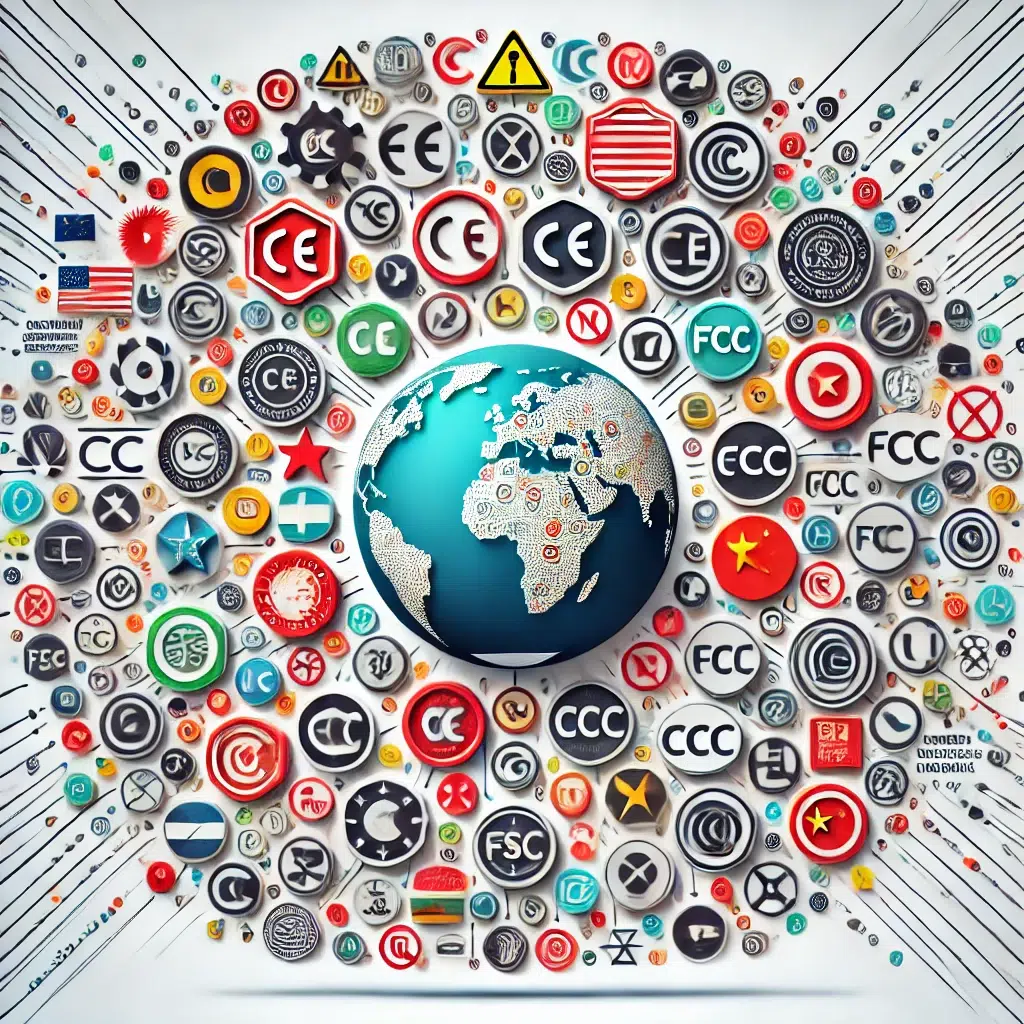In procurement, staying abreast of product legislation is not just about compliance; it’s a strategic imperative that safeguards your organization’s integrity, ensures product safety, and upholds environmental standards. For professional buyers, understanding and adhering to various regulations — from REACH to the Ecodesign Directive — is crucial. This blog post will explore how buyers can effectively relate to product legislation and maintain their knowledge in a changing legal landscape.
Product legislation – content
Examples of Product Legislation a buyer can encounter
Following are 10 examples of product legislation.
REACH (Registration, Evaluation, Authorization and Restriction of Chemicals)
REACH impacts almost every product on the EU market. It mandates the registration of chemicals and substances to ensure their safety for human health and the environment. As a buyer, ensure your suppliers comply with REACH to avoid disruptions and legal issues.
Persistent Organic Pollutants (POPs) Regulation
This regulation aims to eliminate or restrict the production and use of POPs. Buyers should verify that products, especially those imported, do not contain substances listed under the POPs regulation to mitigate environmental and health risks.
General Product Safety Directive (GPSD)
The GPSD requires that all products sold within the EU are safe for use. Buyers should conduct due diligence on product safety measures and recall histories to ensure compliance.
Textile Regulation
This regulation mandates the accurate labeling of textile products. As a buyer, ensuring that textiles are correctly labeled according to fiber composition is essential for consumer protection and compliance.
Food Contact Materials Framework Regulation
Products intended for food contact must adhere to safety standards to prevent contamination. Buyers should ensure that all materials in the supply chain meet these regulations.
Toy Safety Directive
This directive ensures that toys meet safety standards protecting children from harm. Buyers in the toy industry must prioritize compliance checks and safety testing in their procurement processes.
RoHS Directive (Restriction of Hazardous Substances)
RoHS limits the use of specific hazardous materials in electrical and electronic equipment. Buyers should ensure their electronic products comply with RoHS to avoid penalties and protect consumer health.
Low Voltage Directive (LVD) and Electromagnetic Compatibility (EMC) Directive
These directives ensure electrical equipment’s safety and electromagnetic compatibility. Buyers should verify that electrical products meet LVD and EMC requirements through appropriate testing and certification.
Radio Equipment Directive (RED)
RED applies to all wireless devices, ensuring they meet essential requirements for safety and health. Compliance with RED is crucial for buyers dealing with radio and wireless equipment.
Ecodesign Directive

This directive focuses on reducing environmental impact through energy efficiency and design. Buyers should consider the lifecycle environmental performance of products, prioritizing those that meet ecodesign criteria.
Energy Labelling Framework Regulation
It requires products to display energy labels, helping consumers make informed choices. Buyers should ensure products are correctly labeled to facilitate transparency and compliance.
Keeping Up to Date: Strategies for Professional Buyers
- Regular Training: Engage in continuous professional development through seminars, webinars, and courses focused on legal and regulatory updates. LHTS provide a basic level course where you will learn types of legislation you may be involved in as a Buyer, the general requirements defined in EU product legislation and finally what to consider as a buyer linked to relevant legislation. Course about Product legislations by Hans Nilsson
- Subscribe to Updates: Many regulatory bodies and industry groups offer newsletters and alerts. Subscribing to these can provide timely updates on legislative changes.
- Leverage Technology: Utilize compliance management software that offers real-time updates and compliance tracking capabilities.
- Network with Peers: Joining professional networks and forums can be invaluable for sharing insights and staying informed about how others are navigating regulatory challenges.
- Consult Experts: When in doubt, consult with legal experts or compliance specialists, especially for complex products or new markets.
Navigating product legislation is a daunting but essential task for professional buyers. By understanding the key regulations, implementing strategies to stay informed, and prioritizing compliance, buyers can protect their organizations from legal risks, contribute to public safety, and support environmental sustainability. Remember, in the realm of procurement, knowledge is not just power—it’s also protection.
Learn How to Source recommend following courses should be completed before attending: Sourcing basics – get started as Tactical buyer. …..or relevant sourcing experience.
Hans Nilsson provides a course about REACH.
It is an advanced level course and is called What a buyer needs to know about REACH by Hans Nilsson.
The REACH Regulation contains, among other things, rules on the registration of substances, bans or other restrictions on substances, requirements for permits for particularly dangerous substances and rules on informing customers. You who manufacture, import or sell goods and chemical products in the EU / EEA need to follow the rules that apply to your business. The regulation also contains rules that you as a user of chemical products must comply with. We recommend to take the course “Product legislation for buyers by Hans Nilsson” in advance of this course.
Learning Objectives:
- Explanation of the purpose of REACH,
- The roles defined in REACH.
- Safety data sheet (content and purpose)
- And finally what a buyer must consider when sending a request for quotation.
This course is suitable as introduction to REACH for all buyers and for buyer who is a “Downstream users”.
REACH stands for Registration, Evaluation, Authorisation, and Restriction of Chemicals. It is a European Union regulation enacted in 2007 (EC No 1907/2006) with the primary goal of protecting human health and the environment from the potential risks posed by chemicals. REACH applies to all chemical substances on their own, in mixtures, or in products (articles) and impacts most companies across the EU, affecting a wide range of industries.
Key Features of REACH:
- Registration: REACH requires manufacturers and importers to gather information on the properties of their chemical substances and to register the information in a central database managed by the European Chemicals Agency (ECHA). This applies to substances manufactured in or imported into the EU in quantities of one tonne or more per year.
- Evaluation: ECHA and the member states evaluate the submitted information to assess the risk of substances and to ensure compliance with the regulation. This process identifies the need for further testing and assesses the risk of substances to human health and the environment.
- Authorisation: Certain substances of very high concern (SVHCs), such as those that are carcinogenic, mutagenic, toxic for reproduction, or persistent in the environment, may be subject to authorisation. Manufacturers, importers, or downstream users must obtain authorisation to use these substances and demonstrate that the socio-economic benefits outweigh the risks and that there are no suitable alternative substances or technologies.
- Restriction: REACH can impose restrictions on the manufacture, placing on the market, or use of certain substances if they pose an unacceptable risk to health or the environment. Restrictions can be specific to certain uses or apply across the EU.
Compliance for Procurement Professionals:
For procurement professionals, compliance with REACH means ensuring that the products they source, whether manufactured within the EU or imported, comply with the regulation’s requirements. This involves:
- Supplier Engagement: Working closely with suppliers to ensure they are aware of and comply with REACH requirements. This may involve requesting documentation or certification that demonstrates compliance.
- Supply Chain Transparency: Maintaining visibility into the composition of products and their chemical substances is crucial. This may require implementing systems for tracking and managing data on substances used in products.
- Risk Management: Identifying and mitigating risks associated with non-compliance, such as disruptions to supply chains or potential legal and financial penalties.
- Alternative Sourcing: In some cases, it may be necessary to find alternative materials or suppliers to comply with REACH, especially when dealing with substances subject to authorization or restriction.
About Learn How to Source
Learn How to Source (LHTS) is an online platform based in Sweden, offering a range of procurement courses accessible globally. It serves as a community where procurement experts share their knowledge through online courses, designed for various experience levels from introductory to expert. Courses are concise, about 30 minutes each, and cover different aspects of procurement, tailored for different buyer roles. The courses focus on practical knowledge, presented by seasoned professionals, and includes quizzes and certificates. They can be accessed from any device, emphasizing micro learning for flexibility and efficiency.
Learn about LHTS’ courses in Swedish at Utbildning Inköp.
